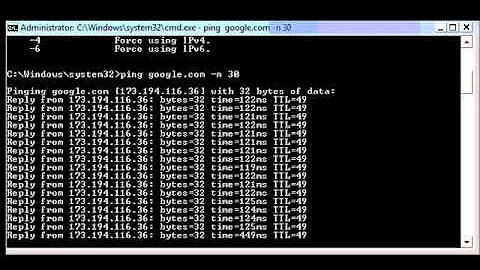What is the best way to measure latency via a "telnet to port" test, preferably with built-in Linux tools?
Solution 1
What about :
time nc -zw30 <host> <port>
Solution 2
Just use ping or configure a client-server setup and use one of the established unix network benchmarking tools:
https://www.binarytides.com/linux-commands-monitor-network/
https://access.redhat.com/solutions/2122681
--
While time+nc is useful in getting ballpark estimation on latency, it should not be used as a fact in production connections evaluation.
For example, instantiation and running of extra processes (like time) costs, well, time. For example, I got 15-20ms results with time+nc, while with traditional ping/ICMP echo, results were on the side of 3-5ms. For quick test, ping seemed to do the job, for more elaborate results, one usually needs a client-server setup.
Related videos on Youtube
Comments
-
r3cgm almost 2 years
I'm writing a Graphite/Diamond collector measuring network latency. Specifically it should measure the time it takes to open up a connection to a port on a remote server. And it needs to work via script, i.e. no humans on the keyboard running this interactively.
To give an example with a fictional parameter to telnet which would do exactly what I need.
time telnet --close-connection-immediately-after-established somehost.somedomain.com 1234 Trying somehost.somedomain.com... Connected to somehost.somedomain.com. Escape character is '^]'. Connection closed automatically after established. real 0m3.978s user 0m0.001s sys 0m0.003sBasically, what's a command-line way to output 3.978 given the example above using only builtin tools?
You could wrap the telnet in an expect script I suppose and have it issue:
^] close... but that seems rather ugly. Any ideas?
-
 alexus over 9 yearsI think using
alexus over 9 yearsI think usingexpectprobably is your best bet... -
Bert over 9 years
{ time nc -v -z r300.isovega.net 22; } |& grep real | awk '{print $2}' -
 Xavier Lucas over 9 yearsNetwork latency has nothing to do with the time taken for a connection to be in the TCP state ESTABLISHED. And that's also off-topic.
Xavier Lucas over 9 yearsNetwork latency has nothing to do with the time taken for a connection to be in the TCP state ESTABLISHED. And that's also off-topic.
-
-
r3cgm over 9 yearsNicely done! That's perfect.
-
Teja Vemulapalli over 5 yearsIn case of error
nc: invalid option — 'z': use solution mentioned in this answer -
straville almost 5 yearsUsing
timeincurs extra process instantiations and executions, compared to the natural state of using e.g. a socket connection, and as such doesn't give accurate picture of the network latency. See my answer for details -
r3cgm almost 5 yearsThanks for the response. To clarify, the intent of the original question was to measure as you describe, not just network latency but all the overhead time for the remote server to negotiate a port connection request. The client-server setup was already in place.
-
duality_ over 4 yearsAdditionally, not all servers allow for ping.




